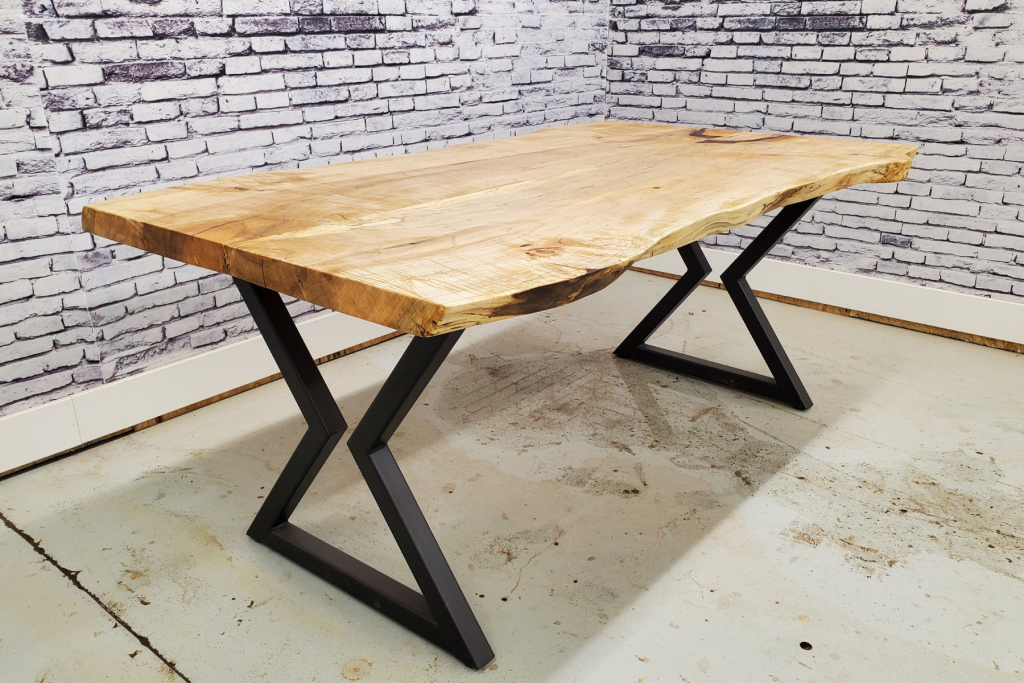Discover Affordable Beauty in High-Quality Dining Table Legs Wood
Discover Affordable Beauty in High-Quality Dining Table Legs Wood
Blog Article
Checking Out the Various Sorts Of Table Legs Timber for Your Eating Space
The choice of dining table legs wood can profoundly affect both the useful and aesthetic top qualities of your dining area. Strong wood options, such as oak and walnut, give a classic look with unparalleled sturdiness, while crafted timber alternatives provide ingenious layouts that simulate the splendor of all-natural grains.
Solid Timber Options

Unlike crafted products, solid wood is less prone to warping and damage over time when effectively kept. Each piece of strong timber is one-of-a-kind, showcasing private attributes that add to the appeal and character of the dining table.
Additionally, strong timber can be ended up in many methods, ranging from natural oils to stained coatings, permitting home owners to individualize their furniture to match their design. In summary, selecting strong timber for dining table legs not just makes sure structural integrity yet additionally improves the visual allure of the eating location, making it a rewarding financial investment for any type of home.
Engineered Wood Alternatives

Plywood, created from several layers of wood veneer, is specifically strong and secure, making it an exceptional choice for eating table legs. Its layered make-up enables it to endure adjustments in humidity and temperature far better than traditional strong timber. MDF, on the various other hand, provides a smooth surface area for painting or veneering, making it possible for designers to attain a refined appearance while preserving architectural integrity.
Particleboard, often utilized in budget-friendly choices, gives decent strength and is light-weight, making it much easier to handle. However, it might not be as durable as plywood or MDF. When choosing crafted wood options, it is important to take into consideration the intended use and preferred visual. These products not just enhance the performance of eating rooms but also enable better layout flexibility, guaranteeing that modern and standard styles can exist together sympathetically.
Reclaimed Timber Includes
Redeemed timber provides a distinct mix of sustainability and personality, making it a significantly preferred selection for eating table legs. Sourced from old barns, factories, and other frameworks, redeemed timber symbolizes a history that brand-new products simply can not replicate. Each piece lugs its own story, marked by unique blemishes, knots, and differing grain patterns, which add to a table's one-of-a-kind visual appeal.
In addition to its visual beauty, recovered wood is an eco-friendly alternative. By repurposing previously made use of products, it lowers the need for new lumber, hence aiding to decrease and save forests waste. This straightens with a growing customer choice for sustainable techniques in decor.
Moreover, reclaimed timber is commonly much more durable than freshly gathered timber because of its age. The all-natural drying procedure that recovered timber goes through cause a denser and more powerful material, making it less at risk to bending and splitting. This enhances the long life of dining tables, permitting them to stand up to the rigors of everyday usage.
Softwood vs. Hardwood
When choosing eating table legs, recognizing the distinctions between softwood and hardwood is essential for accomplishing both functional and aesthetic objectives. They commonly show a more rustic look, making them appropriate for country-style or laid-back eating spaces.
On the other hand, woods, sourced from deciduous trees like cherry, read this post here maple, and oak, are renowned for their density, strength, and resilience. The elaborate grain patterns and rich colors of hardwoods supply a ageless and advanced charm, making them optimal for formal dining settings. While woods often tend to be a lot more costly and much heavier, their durability against damage often warrants the financial investment.
Eventually, the option between softwood and hardwood for eating table legs must line up with your design vision, usage demands, and spending plan, making blog certain that your eating space reflects your individual style while staying functional with time.

Surfaces and Treatments
The visual charm and long life of table legs can be dramatically boosted via numerous coatings and therapies. These processes not only safeguard the wood from damage yet additionally raise its appearance, enabling it to complement diverse indoor designs.
One common treatment is tarnishing, which passes through the timber and improves its natural grain while adding color. Stains provide an abundant, classy appearance, allowing property owners to match their furniture with existing decor. Conversely, clear finishes such as polyurethane or varnish create a safety layer without modifying the wood's initial shade, guaranteeing longevity versus damage.
Additionally, all-natural oils, like tung or linseed oil, nourish the timber and supply a subtle luster, all while being eco-friendly. These oils allow the surface to breathe, protecting against dampness accumulation and potential warping.
For those seeking a rustic appeal, weathered or troubled surfaces can be put on develop an aged look, adding character to the item. Ultimately, the option of finishes and therapies depends upon individual preference, wanted appearances, and the certain wood kind, making it necessary to consider these aspects when choosing eating table legs for your space.
Verdict
Solid timbers, engineered options, and recovered alternatives each offer distinct benefits, providing to numerous choices and needs. why not check here Inevitably, the option of timber kind ought to straighten with wanted style, resilience, and ecological factors to consider, enhancing the overall eating experience.
The option of dining table legs wood can profoundly impact both the functional and aesthetic high qualities of your dining space - Dining Table Legs Wood. Strong timber options, such as oak and walnut, provide a traditional look with unmatched longevity, while engineered timber options use cutting-edge designs that imitate the splendor of all-natural grains. Strong wood provides a classic high quality that can elevate the total style of an eating space. Each piece of solid timber is unique, showcasing specific qualities that add to the charm and character of the eating table
Furthermore, redeemed wood is often extra durable than recently harvested wood due to its age.
Report this page